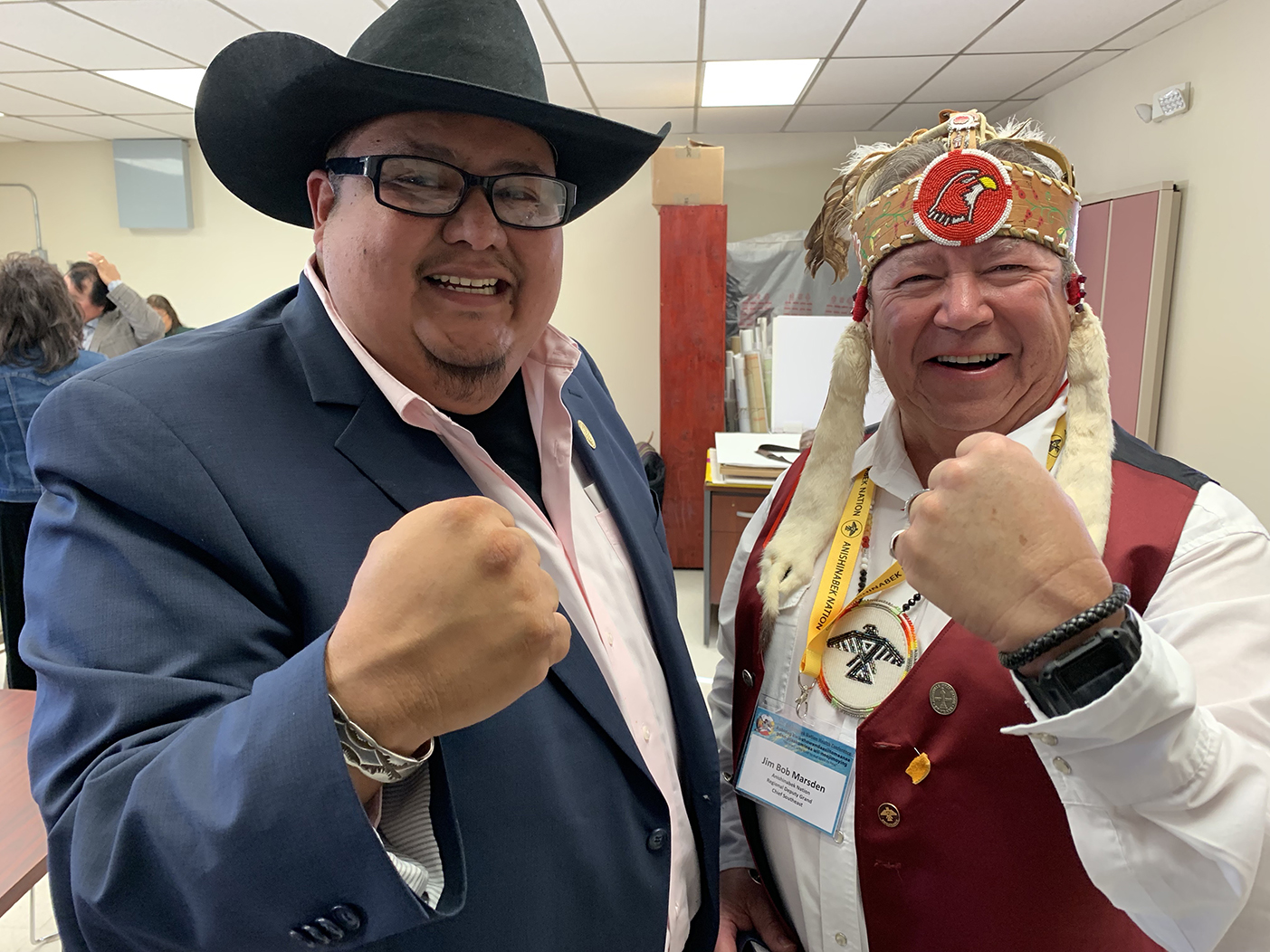
Navajo Nation Council Speaker Damon, Navajo Government Development Meet with Anishinabek Nation Delegation

Navajo Nation Council Speaker Damon (left) and Anishinabek Nation Deputy Grand Chief James Marsden (right) following the Chichiltah Chapter meeting where the First Nations delegation observed the chapter meeting on Nov. 18, 2019.
Published November 21, 2019
CHICHILTAH, N.M. — Speaker Seth Damon and staff from the Office of Navajo Government Development met with Chichiltah Chapter officials and a delegation from the Anishinabek Nation Nov. 18.
The purpose was to give the Anishinabek delegation a firsthand look at the Navajo Nation government and its work with Public Law 93-638 contracts for education and health, financial administration, promulgation of tribal laws, elections, language and culture preservation, and other tribal nation building actions.
The Anishinabek Nation is an organization representing 40 First Nations groups across Ontario, Canada.
“They’re facing a major election in Feb. 2020 and they’re looking at the Navajo Nation as a model and leader because of a lot of what we have adopted with the federal government,” said Edward Dee, executive director for the Office of Navajo Government Development.
Director Dee added that the delegation came to the Navajo Nation to learn as much as they can to take back to their grand council and chiefs.
Anishinabek Nation Deputy Grand Chief James Marsden of Aldersville First Nation said the tribe, located in the southeastern region of Ontario, has 1,200 members and land base of 2,000 acres for the reserve.
Martin Bear of Manitou Island (Great Spirit Island) in northern Ontario, who is the chief governance negotiator said, “We’re now at the place where we’ve agreed to all of the words in the governance agreement and we have to bring the agreement to our people and leadership to explain what’s going to be different.”
Bear said the tribal First Nations leadership always maintained that the lawmaking powers of the nation was inherent.
In February, the Anishinabek Nation will hold a referendum to determine elections for their chiefs and councils under tribal laws, customs, traditions and practices.
The delegation explained that tribal leadership in Ontario is elected through three federally sanctioned methods: the Indian Act, which limits leadership to two-year terms; the Custom Election Code, which is drafted by tribes and approved by the Canadian federal government; or through the First Nation Election Act that allows for four-year terms of office.
All three election mechanisms do not empower the Anishinaabe people. Instead, they are still controlled by the federal government.
Bear said the Anishinaabe people also face citizenship issues when the Canadian federal government utilizes the Indian Act to label members as “Status Indians.” The act was designed to reduce the Indian population, said Bear.
Bear explained that the tribe is currently negotiating a rate for tribal members to benefit from revenues from mine development, sawmills, forestry operations, and hydro-flooding of tribal lands.
Speaker Damon also provided an overview of the Navajo Nation’s development as a tribal nation, noting that the Navajo Nation’s lands are held in trust by the United States government. Speaker Damon pointed to the self-determination act under President Nixon as an important moment for the Navajo Nation.
“We have over 300,000 Navajos in our communities and across the world. They always say, wherever you go, you can always find a Navajo,” said Speaker Damon.
The meeting was the first in the Anishinabek Nation’s tour of the Navajo Nation focusing on tribal government development. The delegation will continue their visit to the Navajo Nation throughout the week and plan to meet with officials from the three branches.
The post Navajo Nation Council Speaker Damon, Navajo Government Development Meet with Anishinabek Nation Delegation appeared first on Native News Online.
